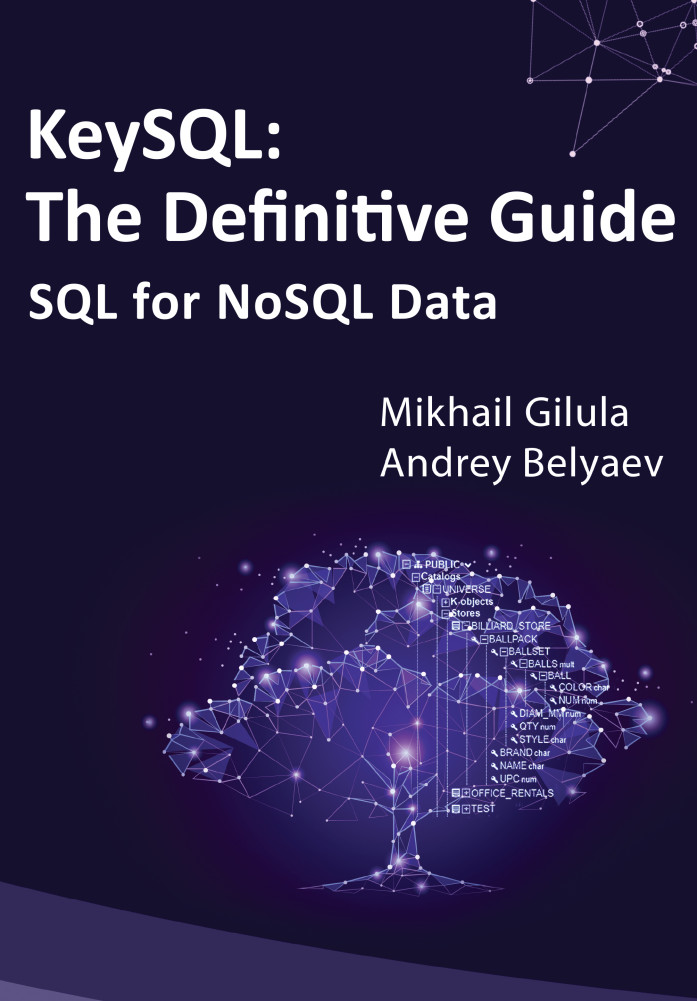Silicon Valley startup Keyark, Inc. has released its new-generation KeySQL database technology, enabling non-programmers to efficiently analyze fast-growing volumes of complex data, including JSON file collections, accumulated by organizations in recent years. This non-flat data does not fit comfortably within flat SQL databases, and consequently, is handled poorly and queried with great effort, though significant resources are spent to produce, collect and maintain it. But now, KeySQL Server can easily convert any set of JSON files into a KeySQL store and analyze it on the spot with ad hoc queries. Other non-flat file formats can be handled the same way.

Keyark’s innovative technology is packaged as KeySQL Scalable Platform. It is built around KeySQL database language that is rooted in Key-object Data Model, just like the standard SQL language is rooted in Relational Data Model introduced by IBM’s mathematician Edgar F. Codd some 50 years ago.
KeySQL was invented to readily manage all enterprise data, including non-flat data. It adheres to the SQL standard of productivity while dealing with data structures much more complex than relational tables. And it makes the powerful SQL functionality including joins, set operations, and aggregations, equally applicable to non-flat data. It has the same set of high-level statements SQL has, but they cover non-flat data. Anyone fluent in SQL can grasp KeySQL in only a few days.
Creating databases, called stores, is so simple a novice can easily do it because store definitions don’t require any parameters and don’t constrain the structure of the data, unless this is explicitly requested by users. Any business data structure can be almost directly used as the logical data structure with no data modeling effort. And there is no physical data modeling whatsoever. In fact, the physical data structures are transparent for the users. KeySQL redefines the concept of scalability since any two stores can generally be viewed as one, irrespective of the data structure.
KeySQL Server employs an independent storage layer that can be formed as a set of plugin SQL databases. It makes sense because those are the most mature data solutions on the market after 50 years of development. The SQL databases can be mixed and matched. For example, some units can be formed by Oracle, some by Microsoft SQL Server, some by Teradata, and some by PostgreSQL. This allows using relational databases in a scalable fashion. Other types of storage are also possible.
The release of KeySQL Scalable Platform marks a milestone in data management, offering a unified solution for both flat and non-flat data analytics. By embracing the key-object data model, organizations can unlock new possibilities in data-driven decision-making and innovation.
KeySQL also opens new application areas; for example, the structured search on the Web, especially for e-commerce that seems to be underserved by Google. Another example is a universal data layer for AI systems.
As we look to the future, one question looms large: What data model does nature itself employ in biological neural networks? While the answer remains elusive, the journey from Codd’s relational model to the key-object data model illustrates the ongoing quest for simplicity, efficiency, and adaptability in data management.
The book “KeySQL: The Definitive Guide. SQL for NoSQL Data” is now published by Amazon, Apple, and Google, and can be accessed via the links below.
https://www.amazon.com/KeySQL-Definitive-Guide-NoSQL-Data/dp/1962997332/
http://books.apple.com/us/book/id6503181586
https://play.google.com/store/books/details?pcampaignid=books_read_action&id=PdoKEQAAQBAJ
About Keyark Inc.
Keyark develops KeySQL technology enabling a productivity breakthrough in the handling of non-flat data. For more information, visit
Contact Information
David Golden
Head of Product
dgolden@keyark.com
+1(415) 235-4458
SOURCE: Keyark, Inc.
